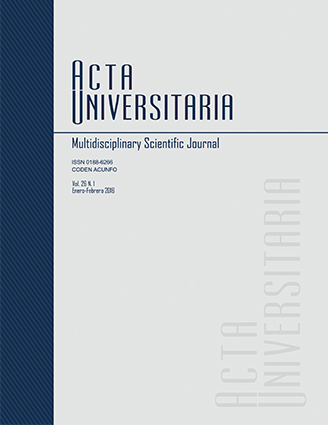Publicado 2016-02-19
Palabras clave
- Baja California,
- borrego cimarrón,
- calidad del agua,
- cámaras trampa.
- Baja California,
- bighorn sheep,
- water quality,
- camera traps.
Cómo citar
Resumen
Se analizó la utilización de aguajes por el borrego cimarrón en la Sierra Santa Isabel, Baja California, México durante la temporada de sequía de 2011 y 2013 y el periodo de lluvias e inicio de la temporada de sequía del 2015. Asimismo, se estudió la calidad del agua, con base en siete parámetros fisicoquímicos. Se obtuvieron 260 registros fotográficos de borregos cimarrones, donde hembras, añeros y corderos representaron el 73%. En el periodo de lluvias, en dos de los aguajes se obtuvieron valores de conductividad de 1.31 µS/cm2 y 1.92 µS/cm2, y de sólidos disueltos totales de l0.65 ppt y 0.95 ppt, indicando un bajo contenido de sales en el agua. Los valores de oxígeno disuelto mayores a 6.4 ppm, dureza del agua menor a 100 ppm y PH entre 6.5 y 8.5, sugieren que el agua tiene condiciones óptimas para ser bebida por los borregos cimarrones. Los aguajes con mayor utilización por los borregos fueron El Zamora (n = 120) y El Cordero (n = 67), donde se registraron las mejores condiciones de calidad de agua en este estudio. El mayor registro de hembras y añeros, asociado a condiciones óptimas de calidad del agua, confirman la importancia de los aguajes para la crianza y reclutamiento del borrego cimarrón.
Citas
- Beede, D. K. (2006). Evaluation of water quality and nutrition for dairy cattle. High Plains Dairy Conference, 1, 129-154.
Greig-Smith, P. (1983). Quantitative Plant Ecology. Oxford: Blackwell.

